WASHINGON: From space weapons to armed drones, Chinese technology is accelerating into worrying new arenas, warns the Pentagon’s annual report on Chinese military power. But that doesn’t mean China is overtaking the US, a leading space expert cautioned, and a panicked over-reaction could drive bad policy.
“Perhaps the most worrying part of the report from a US perspective is the section talking about Chinese counterspace capabilities,” said Brian Weeden, the Secure World Foundation‘s technical advisor. “The tough question is what to do, [and] some of the potential options could make the situation worse instead of better.”
The report discusses three apparent tests of Chinese anti-satellite systems (ASAT), not just the well-known two. Everyone knows about China’s 2007 test when it destroyed its own defunct satellite, scattering debris that continues to orbit the planet and threaten space assets of every country. A fair number of people know that in 2014, China conducted what the Pentagon called a “successful” test of the same system, albeit without actually destroying a target, to everyone’s relief.
But very few people know that in May 2013, China launched something else: a mysterious object that nearly reached geosynchronous orbit, the ultra-high altitude where crucial communications satellites hang out. Based on its trajectory, the system couldn’t have been intended to launch satellites or traditional research missions. Instead, the Pentagon report says and Weeden’s own analysis confirms, it could have been an anti-satellite system able to reach altitudes three times higher than the weapon tested in 2007 and 2014.

PLA Air Force Gen. Xu Qiliang
China certainly has space hawks in high places. In 2009, PLA Air Force chief Xu Qiliang said “competition between military forces” in space is “a historical inevitability.” Qiliang had to retract his statements after then-president Hu Jintao “swiftly contradicted him,” the Pentagon report notes. But far from being punished, Qiliang became the first air force officer promoted to a vice-chairmanship on the Central Military Committee, a body helmed by Xi Jinping himself that serves as a combination of the National Security Council and Joint Chiefs of Staff.
Chinese military doctrine sees counter-space weapons as “central” to what they call “informationalized” warfare, an appalling neologism but an insightful concept that unifies what Americans (at least outside the Navy) still tend to see in separate categories of space, cyber, and electronic warfare. If you want to deny an enemy access to satellite intelligence and communications, after all, there are many ways to skin that cat: shoot down the spy satellite, shoot down the communications satellite relaying its data, jam their transmissions, or hack the whole network. The weapons of such warfare include not just missiles but lasers, jamming, and hacking — the latter an area of significant Chinese successes: “In a single year,” the report says, “actors associated with the Chinese Government successfully penetrated US Transportation Command (USTRANSCOM) contractors (not the command itself) about twenty times.” Moore’s Law and global trade let Beijing exploit rapid advances in information technology.
Space, however, still requires old-fashioned rocket science. “China possesses the most rapidly maturing space program in the world,” says the Pentagon report, but Weeden cautions that rapid rise is from a very low base.
“Technological development often follows an S-curve, where there is an initial slow rate of growth followed by a middle period of rapid advancement and then a slow tapering off as it gets tougher and tougher,” Weeden told me. “So it should come as no surprise that China’s space program is developing rapidly as it moves through that middle portion of the curve. That does not mean that China’s space capabilities will equal or surpass that of America’s anytime soon.”
“The US still has a decades-long lead in refining and honing its capabilities to a degree that China cannot match,” Weeden said. “For example, the report mentions that China has finally developed its own sub-1 meter imagery satellite [i.e. with resolution finer than one meter]. That’s a capability the US had decades ago, and anyone with a credit card can purchase much higher resolution imagery right now from any one of a number of commercial companies.”
So we need to be sure we know what we’re talking about before we raise the prospect of an arms race in space. Unfortunately, said Weeden, clarity is not what we’re getting.
“We’ve heard a lot of talk from top US officials over the last several months about how to make US national security space capabilities more resilient to attack, and of trying to deter potential Chinese attacks on US capabilities,” he told me. “But we haven’t heard any details on how they are going to do that, or even what options are being debated. That concerns a lot of people, because some of the potential options could make the situation worse instead of better.”
In particular, “there’s a lot of talk about so-called ‘active defenses’ without actually defining what that means, and some are even talking about developing more outright offensive counterspace capabilities,” Weeden went on. “Last week at the FY16 NDAA mark-up, an amendment passed that would require the Missile Defense Agency to develop plans for a space-based missile defense capability that would be able to ‘defeat’ direct ascent ASATs. I don’t understand how that would even work from a technical perspective, but apparently someone thinks it’s a good idea.”
Space Force launches for ULA’s Vulcan slip to next year
Lt. Gen. Philip Garrant, chief of the Space Force’s Space Systems Command, stated that the service will not move forward with awards for the newest round of the National Security Space Launch program until Congress approves the fiscal 2025 budget.
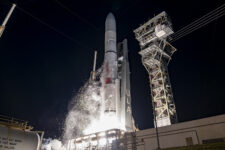









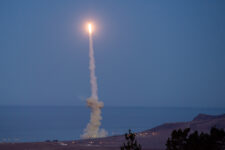


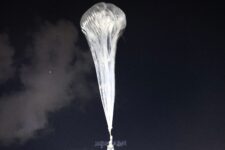
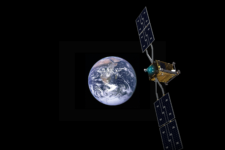

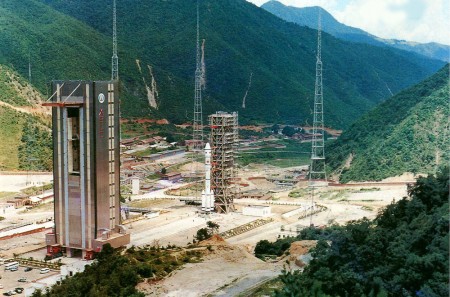


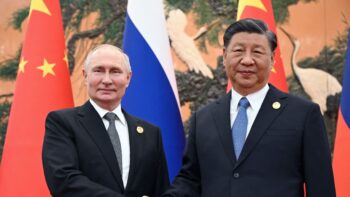



![E-2D_AR_1[1]](https://breakingdefense.com/wp-content/uploads/sites/3/2024/10/E-2D_AR_11-350x233.png)




